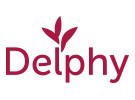In the Spring of 2020, trials were conducted by Delphy Research Institute in the Netherlands, on behalf of Moleaer to examine the effects that oxygen nanobubble enrichment of irrigation had on strawberry cultivation. Delphy’s broad experience in strawberries with Berryplaza and their ability to conduct tests comparable to normal growing conditions with a high level of knowledge and supervision made it an ideal research partner for Moleaer.
In this test, the group was able to isolate two cohorts differentiated by one variable: dissolved oxygen (DO) and high concentrations of nanobubbles in the water. In the study, a control group held DO steady between a typical 7 and 9 mg/L, while the nanobubble treated water was brought to an average DO concentration of 30mg / L.
At the trial conclusion, plants irrigated with oxygen nanobubbles had a 14% yield increase compared to untreated plants (8.2Kg vs 7.2Kg). Pythium counts were 74% lower in samples treated vs. the untreated control group. Plants irrigated with oxygen nanobubbles also had healthier root mass and lower instances of disease (Phytophthora).

Bart Jongenelen from Delphy: “We had followed previous results with nanobubbles in other crops with interest and as I learned more about the properties of the nanobubbles I have to say that I became more and more interested. The theory behind it is that oxygen plays an important role both in the nutrient uptake of roots and in the biology in the root environment. For these trials, we chose to focus on yield and to follow the root development with visual inspections. Clear differences emerged from this. For example, the total production was almost 1kg higher with the nanobubble treatment.”
Michiel de Jong from Moleaer: “The differences in production were very obvious. The results confirmed what we have already demonstrated in other crops, and applies to strawberry production as well. The nanobubble generator serves a dual purpose. First, nanobubbles deliver oxygen extremely efficiently into water which allows us to maintain very high saturation levels with minimal loss. This enables us to deliver significantly more oxygen into the root zone and promote healthy root development. Second, the oxidative properties of the oxygen nanobubbles break down algae and suppress pathogens, effectively improving the water quality and maintaining a more hygienic irrigation system.”

Bart adds: “We have also been able to determine that in this test. During the visual root inspections, we observed that the control was much more affected by Phytophthora fragariae, otherwise known as Lanarkshire disease, infestation. The roots with the nanobubbles looked much healthier.”
 Delphy
Delphy
 Moleaer
Moleaer